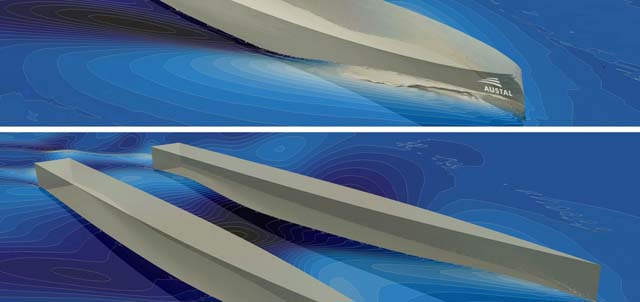Western Australian shipyard Austal’s new artificial intelligence (AI) toolset, DeepMorpher, is helping the company’s designers explore broader design spaces whilst significantly reducing resource requirements for complex hull optimisation routines.
The company says that quickly evolving market environments require an innovative approach to provide optimum solutions for emerging trends, including autonomy, decarbonisation, and new capabilities. DeepMorpher was developed by Austal Australia to achieve greater efficiencies and productivity in design and engineering.
Max Haase, Development Hydrodynamics Specialist, Austal Australia said: “DeepMorpher allows us to efficiently investigate and optimise (conceptually) different hull forms beyond those in our traditional product range. It reduces our reliance on domain expertise and enables greater focus on maximising outcomes based on key customer requirements. Artificial intelligence and machine learning has broadened and accelerated our optimisation process, delivering greater options, more quickly for our customers. With the support of high performance computing (HPC) provider DUG Technology, we can reduce the timeframe for hull form optimisation in conjunction with computational fluid dynamics (CFD) by an order of magnitude,”
While DeepMorpher has been developed primarily for optimising ship hull forms, it can also be used for arbitrary shape optimisation including many other maritime, aerospace or engineering applications.



